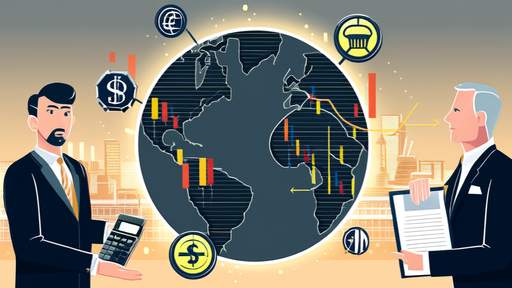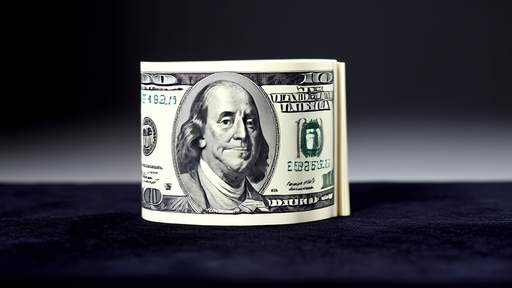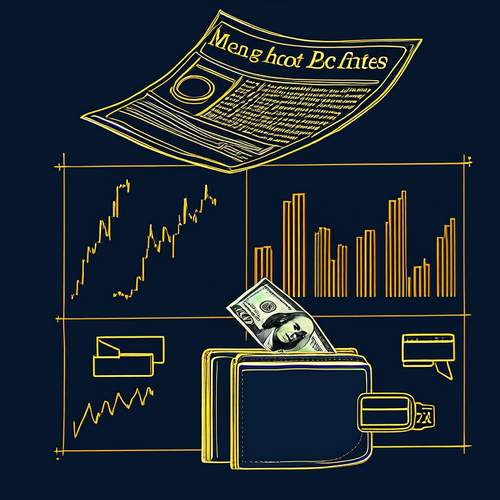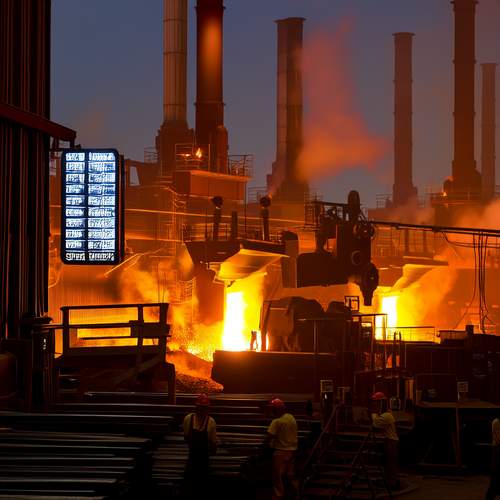In recent months, the US dollar has experienced a notable decline against major currencies. This trend has sparked widespread interest and concern among economists, investors, and policymakers. The dollar's depreciation is a multifaceted phenomenon, influenced by a combination of economic, political, and global factors. Understanding the causes and implications of this decline is crucial for anyone seeking to navigate the complexities of the modern financial landscape.
Causes of the Dollar's Decline
The depreciation of the US dollar can be attributed to several key factors, each contributing to the overall downward trend.
1. Monetary Policy and Interest Rates
One of the primary drivers of the dollar's decline is the Federal Reserve's monetary policy. In response to economic conditions, the Fed has maintained low interest rates for an extended period. Low interest rates reduce the attractiveness of dollar-denominated assets for foreign investors, leading to a decrease in demand for the dollar. Additionally, the Fed's quantitative easing programs, which involve purchasing large quantities of government bonds, have increased the money supply, further weakening the dollar.
2. Economic Growth and Trade Deficits
The US economy's growth rate has been relatively slow compared to some other major economies. This has led to a perception of weaker economic fundamentals, which can negatively impact the dollar's value. Moreover, the persistent US trade deficit, where imports significantly exceed exports, has put downward pressure on the dollar. A trade deficit implies that more dollars are flowing out of the country to pay for imports, reducing the dollar's value in the global market.
3. Global Economic Conditions
The global economic environment also plays a significant role in the dollar's decline. The economic recovery in the Eurozone and other regions has strengthened their currencies relative to the dollar. For example, the Euro has appreciated significantly against the dollar, reflecting the improving economic outlook in the European Union. Additionally, geopolitical tensions and uncertainties have led investors to seek safer assets, often resulting in a flight to currencies perceived as more stable, such as the Japanese Yen or the Swiss Franc.
4. Political Factors
Political developments both within the US and globally have contributed to the dollar's decline. Domestically, political gridlock and uncertainty surrounding fiscal policy have raised concerns about the US government's ability to manage its finances effectively. Internationally, the US's stance on trade policies, including tariffs and trade agreements, has created uncertainty and impacted investor sentiment. The ongoing trade tensions with China and other countries have further contributed to the dollar's depreciation.
Implications of the Dollar's Decline
The decline of the US dollar has far-reaching implications for the US economy, global trade, and international investment.
1. Impact on the US Economy
A weaker dollar can have both positive and negative effects on the US economy. On the positive side, a weaker dollar makes US exports more competitive, potentially boosting the manufacturing sector and improving the trade balance. This can lead to increased production and job creation in export-oriented industries. However, a weaker dollar also means higher import prices, which can lead to inflationary pressures. This can be particularly challenging for businesses that rely heavily on imported raw materials and components.
2. Global Trade and Investment
The depreciation of the dollar has significant implications for global trade and investment. For countries with strong currencies, exports to the US become more expensive, potentially reducing demand. However, these countries may benefit from increased investment flows as investors seek higher returns in dollar-denominated assets. Conversely, countries with weaker currencies may find it more difficult to attract foreign investment, as the value of their assets declines in dollar terms.
3. Impact on Emerging Markets
Emerging markets often have significant dollar-denominated debt. A weaker dollar can provide some relief for these countries, as their debt burdens become less onerous. However, it can also lead to capital outflows, as investors seek higher returns in stronger currencies. This can create financial instability in emerging markets, particularly those with fragile economic fundamentals.
4. Investment Strategies
For investors, the decline of the dollar presents both opportunities and challenges. A weaker dollar can be beneficial for investors with exposure to foreign assets, as the value of these assets increases in dollar terms. However, it also increases the risk of currency fluctuations, making it more difficult to predict returns. Investors may need to adjust their portfolios to account for these changes, potentially increasing their exposure to foreign currencies or hedging against currency risk.
Future Prospects for the Dollar
Looking ahead, the future trajectory of the US dollar remains uncertain. Several factors could influence its value in the coming months and years.
1. Monetary Policy Adjustments
If the Federal Reserve decides to raise interest rates, this could increase the attractiveness of dollar-denominated assets and support the dollar's value. However, such a move would need to be carefully balanced against the potential impact on economic growth and inflation.
2. Economic Recovery and Growth
A stronger economic recovery in the US, characterized by higher GDP growth and lower unemployment, could bolster the dollar. Conversely, continued economic sluggishness or a recession could further weaken the dollar.
3. Global Economic and Political Developments
The global economic environment will continue to play a significant role in the dollar's value. Developments in the Eurozone, China, and other major economies will influence investor sentiment and currency values. Additionally, geopolitical tensions and trade policies will remain key factors affecting the dollar's performance.
4. Market Expectations and Speculation
Market expectations and speculative activities can also impact the dollar's value. If investors expect the dollar to continue weakening, they may adjust their positions accordingly, potentially exacerbating the decline. Conversely, positive news or changes in sentiment could lead to a reversal of the current trend.
Navigating the Dollar's Decline
The decline of the US dollar is a complex and multifaceted phenomenon, influenced by a range of economic, political, and global factors. While the depreciation of the dollar presents both opportunities and challenges, its future trajectory remains uncertain. For businesses, investors, and policymakers, understanding the causes and implications of the dollar's decline is crucial for making informed decisions and navigating the evolving financial landscape.
In the short term, the dollar's value will likely continue to fluctuate in response to economic data, policy announcements, and global developments. In the longer term, the path of the dollar will depend on the interplay of monetary policy, economic growth, and geopolitical dynamics. As the global economy continues to evolve, the dollar's role as a major reserve currency may also be subject to change, with potential implications for international trade and investment.
In this context, flexibility and adaptability will be key for all stakeholders. Businesses may need to adjust their strategies to account for changing exchange rates and market conditions. Investors may need to diversify their portfolios and hedge against currency risk. Policymakers, meanwhile, will need to carefully balance monetary and fiscal policies to support economic growth while maintaining stability.
Ultimately, the decline of the US dollar is a reminder of the interconnectedness of the global economy and the importance of navigating economic and financial trends with foresight and resilience.

By Benjamin Evans/Jun 3, 2025

By Samuel Cooper/Jun 3, 2025

By Lily Simpson/Jun 3, 2025

By Eric Ward/Jun 3, 2025

By George Bailey/Jun 3, 2025

By Victoria Gonzalez/Jun 3, 2025

By Noah Bell/Jun 3, 2025

By Rebecca Stewart/Jun 3, 2025

By Grace Cox/Jun 3, 2025

By John Smith/Jun 3, 2025

By Emma Thompson/Jun 3, 2025

By Victoria Gonzalez/Jun 3, 2025

By George Bailey/Jun 3, 2025

By Samuel Cooper/Jun 3, 2025

By Michael Brown/Jun 3, 2025

By Grace Cox/Jun 3, 2025

By Megan Clark/Jun 3, 2025

By Noah Bell/Jun 3, 2025

By Emma Thompson/Jun 3, 2025

By Rebecca Stewart/Jun 3, 2025